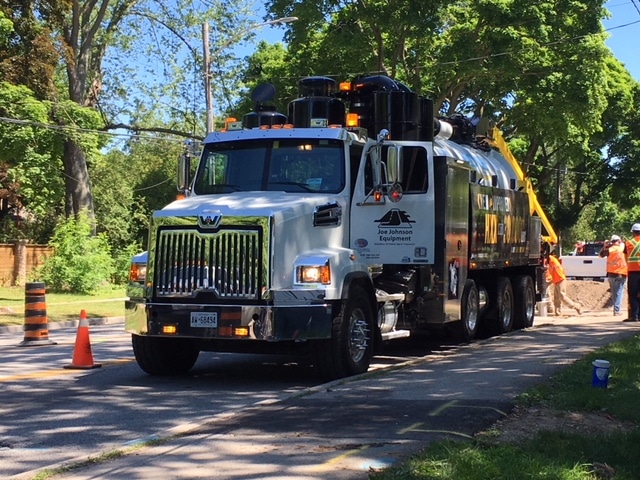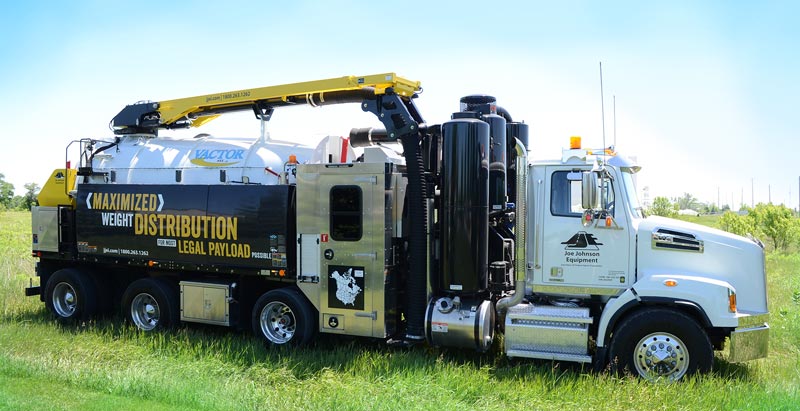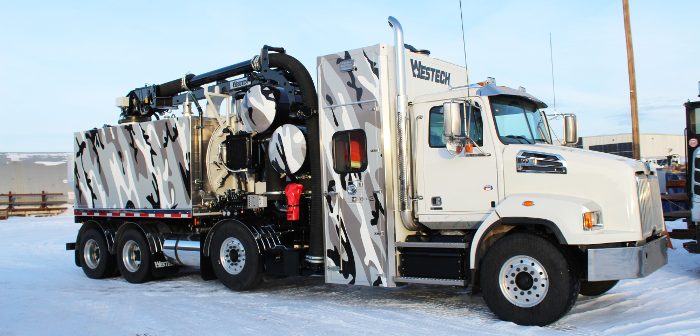Hydrovac Equipment: Safety Procedures and Best Practices

Hydrovac equipment can be utilized as a best practice for all infrastructure projects, whether they be safe excavation around utilities, debris removal, trench digging or backfill restoration. Commercially, hydrovac equipment is often used to safely dig up portions of roads and highways that require resurfacing. When used for trench digging, hydrovac trucks will efficiently locate or install utility lines by digging precise holes to various depths and sizes with ease. No matter what the project, it is important to take into account safety procedures and best practices when using hydrovac equipment.
Hydrovac Excavation Process
Hydro excavation is preferred over other excavation methods because it is the safest, least destructive and most environmentally-friendly method. Hydrovac trucks use highly-pressurized water and air jets to first loosen surface material, and then remove the loosened soil using powerful suction.
Vacuum excavation requires two non-mechanical sources:
-
- First, high-pressure water or air is used to break up the soil on the excavation site.
- Second, suction and airflow work together to remove excess material and safely store it in a debris body. The stored material can either be transported off-site for proper disposal, loaded onto another truck, or used as backfill to fill or level the excavation site.
- First, high-pressure water or air is used to break up the soil on the excavation site.
Vacuum excavation uses non-mechanical sources to complete each task, and thus it eliminates the potential for damage to underground utilities – including gas, fiber optic or electric lines. Each year, the Common Ground Alliance publishes data regarding the cause and type of underground damage. In 2017, 316,422 damage reports were submitted in North America. Underground damage caused by backhoes and trenchers accounted for the highest percentage of reported damages. Vacuum extraction is highly recommended in place of using these methods in order to reduce damages.
Hydrovac Safety Guidelines
As outlined in the TSSA’s Ontario Guideline for Excavation in the Vicinity of Utility Lines, and in the Gas Technology Institute’s Vacuum Excavation Best Practices Guide, the following are some common hazards and best practices for hydrovac usage.
Natural Gas Lines
Prior to carrying out excavation or boring projects, gas lines must be marked and identified with paint or stakes. Once lines have been located, 1 meter surrounding the area to expose the gas line should be dug by hand or with a low pressure hydrovac. By combining water pressure and vacuum suction to excavate ground, hydrovac methods are also effective when working with frozen ground or other harsh terrain. This is especially useful in reducing hand-exposure during hand-dig projects.
Underground Cables
It is important to ensure each digging nozzle end is protected with a non-conductive coating and that all vacuum tube ends are protected with soft, non-conductive, coating. Doing so is the best way to avoid damage to underground utilities. Conversely, the use of steel-crown ends can cause damage to utility lines and should never be used. Job-site safety practices include treating all electrical utility lines as live, with the potential to cause serious injury or death.
If an on-site contractor is working with exposed energized or isolated cables, the following practices must be adhered to:
- Staff and public must be warned of on-site hazards when entering or passing by the job site.
- The contractor must display signs that are in accordance with proper contractor procedures.
- When excavating is in progress, signs indicating ‘Danger’ must be posted within 3 meters of the truck. This is done to reduce the risk of step or touch injury.
- In order to avoid electrical touch injury, no person should come in contact with the truck while the excavation is taking place.
Overhead Wires
Safety practices must always be adhered to when overhead electrical lines and electrical equipment are present. When voltage is unknown, it is required that all personnel and equipment on-site keep back a minimum of 7 meters from overhead lines.
Safe movement distances must also be monitored when the boom is in use. When boom movement is required in the area of overhead power lines, safety communication practices must be followed to avoid accidents. These safety procedures also apply during set-up or repositioning of boom equipment.
Occasionally, rocks or surface debris can clog the dig tube and must be removed to retain proper suction. It is important to be cautious when repositioning the dig tube, especially if it must be elevated to remove the blockage.
Worker Safety
Safety from injury and falls should be of highest priority on any job site. To significantly reduce the likelihood of workplace accidents, all workers and personnel should be familiar with the following safety procedures:
-
- Each worker should be fully aware of all hazards and potential dangers to their health and/or safety prior to hydrovac operation.
- Workers who operate hydrovac equipment must be trained in excavation procedures and machine safety techniques. Hydrovac machinery should only be used in full accordance with operating manuals as set by the manufacturer.
- Each on-site contractor and all personnel using hydrovac equipment must be familiar with safety procedures and monitored by a competent employee.
- Each worker must be fully equipped at all times with personal protective equipment (PPE).
- Caution should be practiced when working with hydrovac equipment at all times. The main hazards associated with job-site injuries include:
- Falls when working near trenches or excavation sites
- Traffic and other road hazards
- Electrical shock
- Confined working spaces
- When working in a confined space, such as a hydrovac tank, each worker should have good working knowledge, training, and experience. Furthermore, confined spaces should be tested and evaluated prior to entry by workers.
- All job-site personnel should be fully trained to operate and inspect the equipment required to perform each task. This includes:
- Hydrovac equipment
- Personal protective equipment and gear
- Fall prevention and protective equipment
- Equipotential bonding and grounding systems
Joe Johnson Equipment
As Canada’s largest supplier of hydrovac equipment, Joe Johnson Equipment stocks equipment and parts from the most reputable manufacturers, such as Vactor, Westech, Truvac and Ring-O-Matic. When you work with Joe Johnson Equipment you can be sure you are getting the best-in-class equipment, service, parts & training – it is how the company was built.


